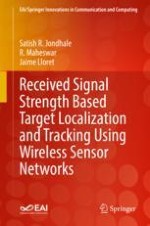2022 | Buch
Received Signal Strength Based Target Localization and Tracking Using Wireless Sensor Networks
verfasst von: Satish R. Jondhale, Dr. R. Maheswar, Jaime Lloret
Verlag: Springer International Publishing
Buchreihe : EAI/Springer Innovations in Communication and Computing
